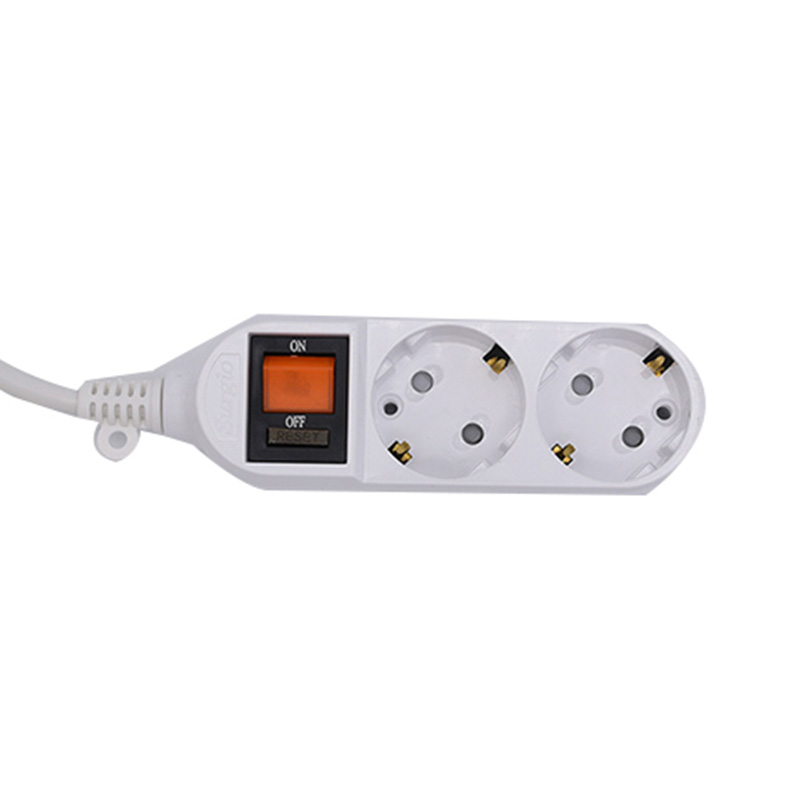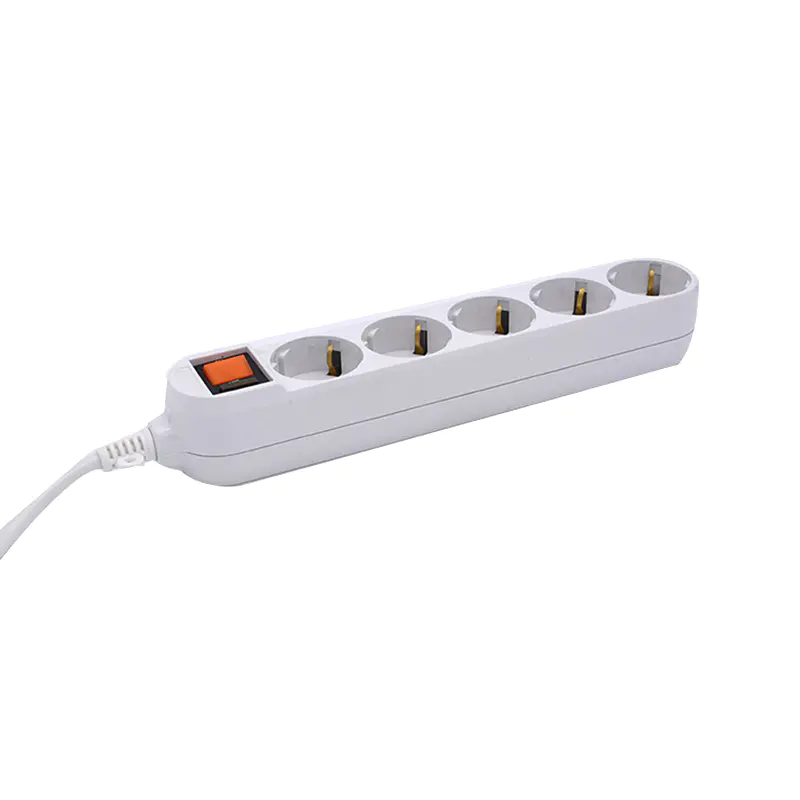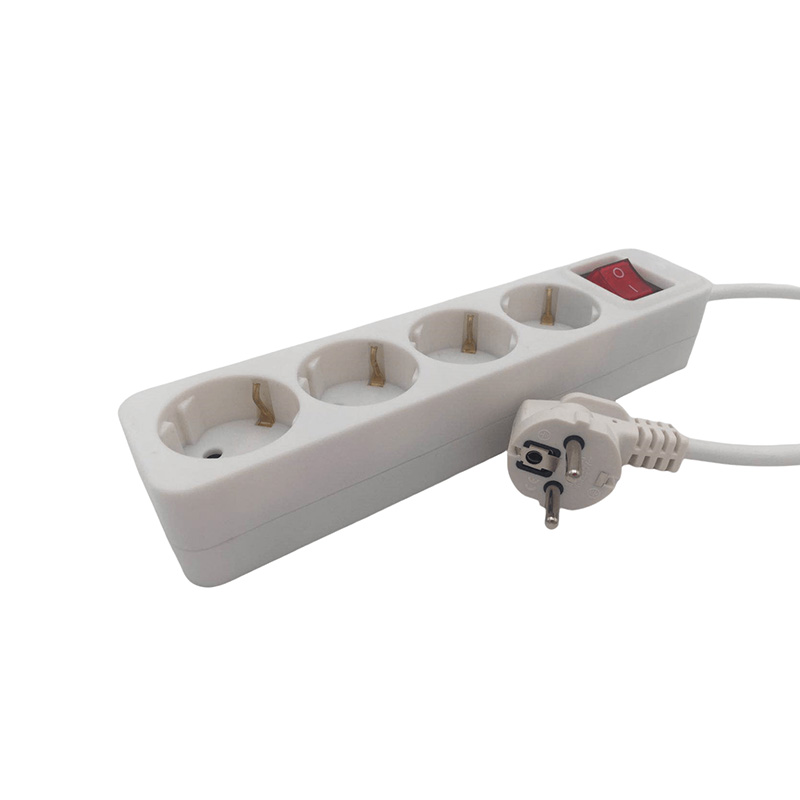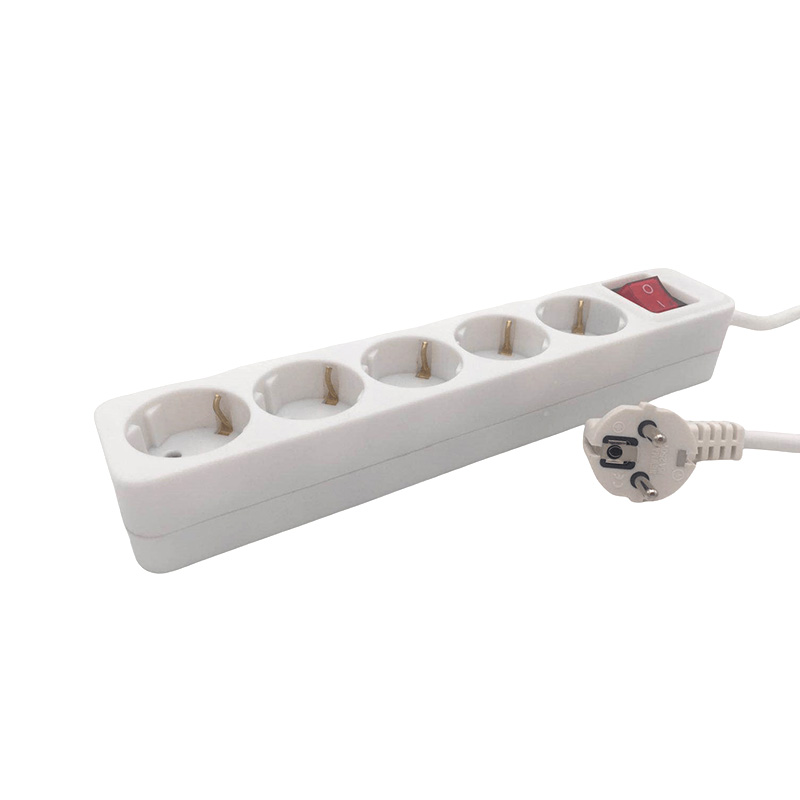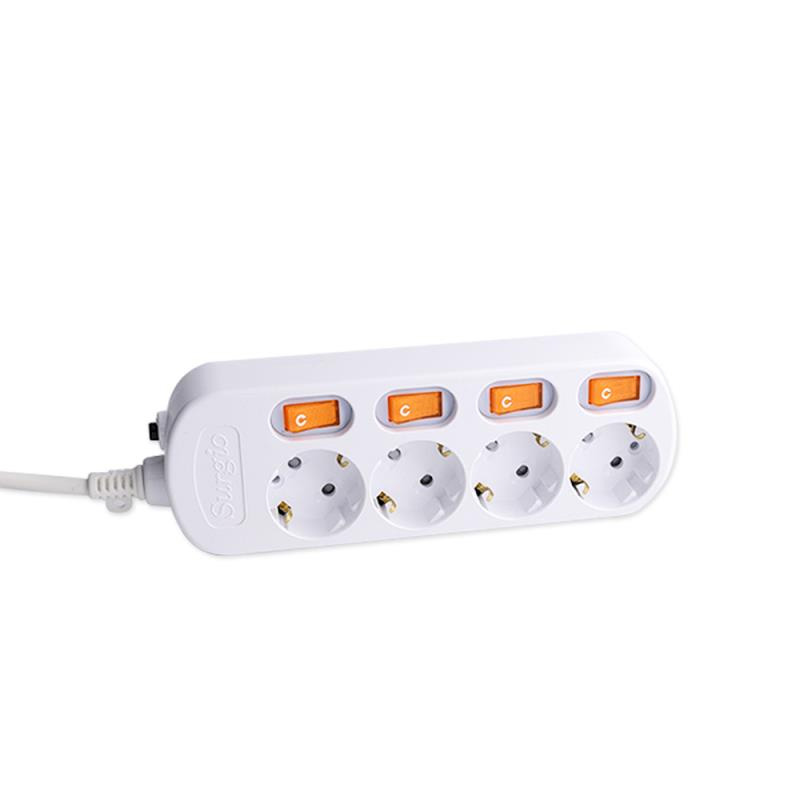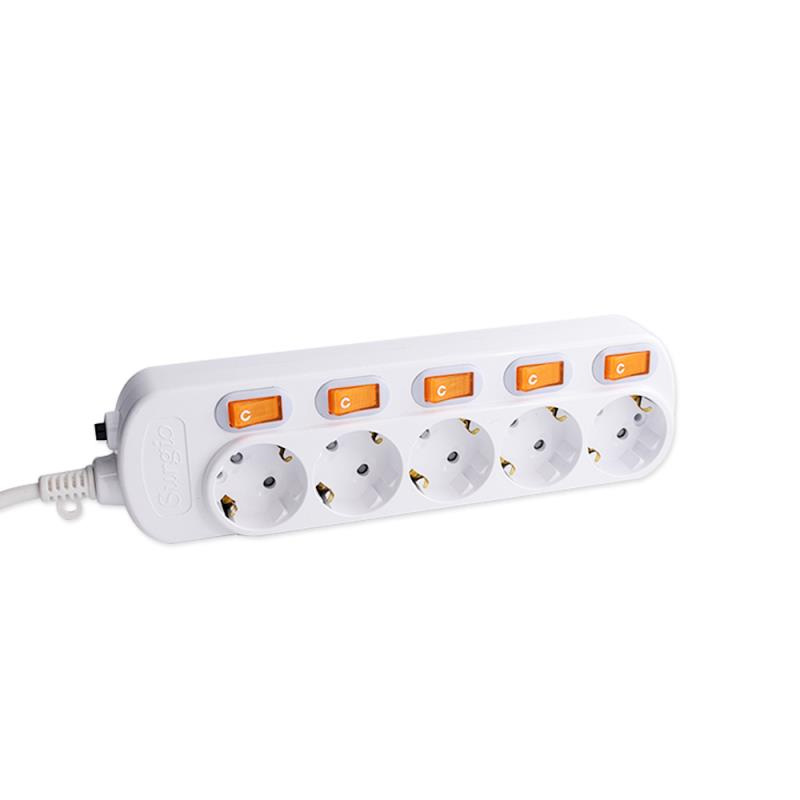Submit feedback
What is PP material power strip? What are its advantages?
 2025.07.17
2025.07.17
 Industry News
Industry News
Power strips are essential accessories in modern homes, offices, and industrial environments, enabling multiple electrical devices to connect to a single power source safely and conveniently. Among various types of power strips, those made with PP material — that is, polypropylene plastic — have gained popularity due to their unique properties. A PP material power strip refers to a power strip whose housing or casing is primarily made from polypropylene (PP), a versatile thermoplastic polymer widely used in consumer electronics and electrical products.
This article provides an in-depth understanding of what PP material power strips are, their manufacturing details, why PP is chosen, and the distinct advantages they offer over other materials.
1. What is a Power Strip?
Before focusing on PP material specifically, it’s important to understand what a power strip is. A power strip, also known as an extension block or multi-socket extension, is a device that plugs into a single electrical outlet and provides multiple power sockets for connecting electrical appliances or devices.
Power strips may also include features like surge protection, overload circuit breakers, USB charging ports, switches, and indicator lights. They help organize and distribute power efficiently and safely to multiple devices in a given space.
2. What is PP Material?
Polypropylene (PP) is a type of thermoplastic polymer widely used in manufacturing due to its excellent chemical resistance, durability, and versatility. It is a semi-crystalline plastic that can be easily molded into different shapes and forms, making it suitable for producing consumer product housings like power strip casings.
Key characteristics of PP include:
Lightweight
High impact resistance
Good chemical resistance (acids, alkalis, solvents)
High melting point (~160-170°C)
Good electrical insulation properties
Low moisture absorption
Recyclable and environmentally friendly
Due to these properties, PP has become a favored material for the housings of electrical products such as power strips, switches, connectors, and circuit breaker covers.
3. What is a PP Material Power Strip?
A PP material power strip is simply a power strip device where the outer casing or housing is made predominantly of polypropylene plastic. This casing encloses and protects the internal wiring, sockets, circuit breakers, and electronic components, providing both mechanical strength and electrical insulation.
Manufacturers mold the PP casing using injection molding techniques, which allow precise shaping, good surface finish, and consistency in production.
Inside the casing, standard electrical components—such as copper wiring, circuit breakers, surge protectors, and sockets—are assembled. The PP shell ensures safety, durability, and user comfort.
4. Why Use PP Material for Power Strips?
The choice of PP for power strip casings is driven by several considerations:
Electrical Insulation: PP is a good insulator, preventing accidental electrical shocks.
Heat Resistance: The relatively high melting point ensures the casing does not easily deform under moderate heat generated during use.
Durability: PP is resistant to impact and cracking, protecting internal components.
Lightweight: Easier to handle and install compared to metal casings.
Cost-effective: PP is inexpensive compared to many engineering plastics and metals.
Chemical Resistance: Resists exposure to household chemicals, oils, and cleaning agents.
Recyclability: Environmentally preferable compared to non-recyclable plastics.
Design Flexibility: Can be molded into various shapes, colors, and sizes with good surface quality.
5. Advantages of PP Material Power Strips
Let’s explore the specific advantages of PP material power strips compared to power strips made from other materials such as ABS plastic, PVC, or metal.
5.1 Superior Electrical Insulation
PP offers excellent electrical insulation, minimizing the risk of electrical leakage and shock. This makes PP power strips safer to use, especially in residential and office environments where children or untrained users may come into contact with the device.
5.2 High Heat Resistance and Flame Retardance
While PP is not inherently flame retardant, it is often formulated with additives that improve its fire resistance. Its melting point (~160-170°C) is higher than some other plastics, helping the casing resist deformation or melting in the event of internal overheating or electrical faults.
This contributes to preventing accidents such as fires or electric shocks from overheated power strips.
5.3 Impact and Mechanical Strength
PP exhibits excellent impact resistance and toughness. Power strips often get bumped, dropped, or handled roughly, and PP casings can absorb shocks without cracking or breaking. This durability extends the lifespan of the power strip and protects internal components.
5.4 Lightweight and Easy to Handle
Compared to metal power strip housings, PP casings are much lighter, which enhances portability and ease of installation. This is especially important for multi-outlet power strips designed to be moved around or temporarily installed.
5.5 Chemical Resistance
PP resists many chemicals, including acids, alkalis, oils, and cleaning solvents. This is beneficial in environments such as kitchens, workshops, or industrial settings where exposure to various substances could degrade other materials.
5.6 Environmental Friendliness
PP is recyclable and generates fewer pollutants during manufacturing than many other plastics. Using PP for power strips supports environmentally conscious production and disposal practices.
5.7 Cost-Effectiveness
PP is one of the most economical plastics available, enabling manufacturers to produce power strips at competitive prices without compromising safety or quality. The combination of affordability and performance makes PP a preferred material for both budget and premium power strips.
5.8 Design Versatility
PP’s moldability allows designers to create innovative power strip shapes, colors, and compact sizes. Features such as integrated cable management, ergonomic grips, and compact socket layouts are easier to implement with PP.
5.9 Moisture Resistance
PP has low moisture absorption, making it less susceptible to swelling, warping, or degradation in humid environments. This property extends the functional life of power strips used in kitchens, bathrooms, or outdoor settings.
6. Comparison with Other Materials
To better appreciate the benefits of PP, it’s helpful to compare it with other common materials used for power strip casings:
| Material | Electrical Insulation | Heat Resistance | Impact Resistance | Weight | Cost | Environmental Impact |
| PP | Excellent | High | High | Lightweight | Low | Recyclable |
| ABS Plastic | Good | Moderate | Moderate | Lightweight | Moderate | Less recyclable |
| PVC | Good | Moderate | Moderate | Lightweight | Low | Environmental concerns |
| Metal (Steel/Aluminum) | Poor (conductive) | Very High | Very High | Heavy | High | Recyclable |
The table shows that PP combines electrical safety, durability, and cost-efficiency better than most plastics and metal options, which is why it is commonly used.
7. Applications of PP Material Power Strips
PP material power strips are used in a wide range of settings:
Home Use: Connecting multiple household appliances, electronic devices, and chargers.
Office Environments: Powering computers, printers, lighting, and office electronics.
Workshops and Garages: Durable enough to withstand rough use and chemical exposure.
Industrial Settings: Used where lightweight, chemical-resistant casings are preferred.
Travel and Portable Power: Lightweight and compact for use with laptops, phones, and small appliances on the go.
Many manufacturers also incorporate surge protection and USB charging ports into PP power strips, adding functionality while maintaining safety.
8. Safety Considerations for PP Material Power Strips
While PP has many advantages, safety is paramount in electrical devices. High-quality PP power strips often include:
Surge Protection: Protects connected devices from voltage spikes.
Overload Protection: Circuit breakers or fuses prevent overheating from excess current.
Fire-Resistant Additives: Enhances flame retardance of the casing.
Child Safety Shutters: Prevent accidental insertion of objects into sockets.
Certifications: Compliance with safety standards like UL, CE, RoHS ensures safe design and materials.
Choosing PP power strips from reputable brands with proper certifications is essential to ensure these safety features.
9. Maintenance and Care
To prolong the life and performance of a PP material power strip:
Keep it clean: Wipe the casing with a dry or slightly damp cloth to remove dust and debris.
Avoid chemical spills: Although PP resists many chemicals, prolonged exposure should be avoided.
Check for damage: Inspect for cracks, discoloration, or overheating signs regularly.
Avoid overloading: Do not exceed the rated current of the power strip.
Store properly: Avoid exposure to direct sunlight or extreme temperatures when not in use.
A PP material power strip is a power strip device whose casing is made primarily of polypropylene plastic. Thanks to the excellent electrical insulation, heat resistance, impact strength, chemical resistance, lightweight, and cost-effectiveness of PP, these power strips offer significant advantages over other materials.
From household use to industrial applications, PP power strips combine safety, durability, and design flexibility, making them a popular choice for manufacturers and consumers alike. When paired with proper electrical safety features and certifications, PP material power strips provide a reliable, user-friendly, and environmentally responsible solution for power distribution.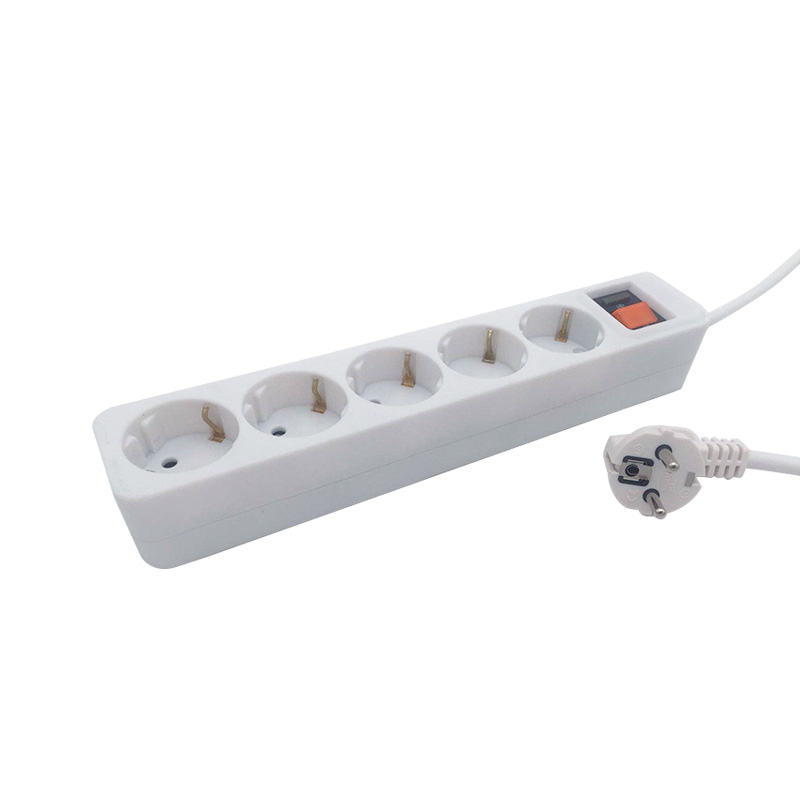
About us:
NEWMANY PROFILE
Hangzhou Newmany Electronics Co., Ltd. is a Sino foreign joint venture located on the picturesque banks of the Xin'an River. The company was established in 1989 and after nearly 30 years of hard work and struggle, it has now begun to take shape. The company has an organizational structure for its website, strong technical capabilities, and can independently develop various electronic product shapes, structural designs, and products with microcomputer control systems. The research and development center jointly established by the company and Zhejiang University of Science and Technology has been rated as the "Hangzhou Enterprise High tech Research and Development Center".
The plug, power strip, extension cord and converter products produced by the company comply with the national standards GB2099,1-1996, GB2099,3-1997, and GB1002-1996, with reliable performance. The products are popular all over the country and highly trusted by customers. Previously rated as a "worry free product in the Shanghai market" and continuously rated as a "recommended product in Zhejiang", the product has obtained the "CCEE" certification for this electrical product, with certification numbers CH0065404-2001 and CH006545-2001.
The company exports over 5 million overloaded protectors, switches, and converters annually. The product has stable performance and is suitable for various electrical products and electrical plugs in various countries.
The company has always adhered to the management model of the international quality assurance system, adhered to the quality policy of "pursuing perfect quality and serving customers with sincerity", and "providing customers with high-quality automotive electronic products and services that meet national standards". The company officially passed the ISO9001 international quality system certification in 1999 and obtained the TS16949 system certification in 2007.
The company will put customers at the center of everything, comprehensively carry out quality upgrades, and explore domestic and foreign markets with excellent quality and honest service.
 TOP
TOP
 ENG
ENG
 English
English русский
русский 한국어
한국어 Deutsch
Deutsch

